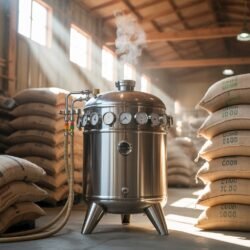Yes, both under-fermentation and over-fermentation are recognized phenomena in coffee processing, each with distinct impacts on coffee quality.
Under-fermentation occurs when coffee beans are not allowed sufficient time or the right conditions for microbial activity to break down the mucilage and develop desirable flavors. The result is often a coffee that tastes green, grassy, or lacks complexity, because the enzymes and microorganisms haven’t had enough time to act on the sugars and other compounds in the mucilage. In washed processing, for example, under-fermentation can leave the beans feeling sticky or slippery, making it difficult to remove the mucilage and resulting in an incomplete flavor development.
Over-fermentation happens when fermentation is allowed to continue for too long or under uncontrolled conditions (such as high temperatures or poor hygiene). This can lead to the development of undesirable flavors, such as sour, vinegary, or alcoholic notes, and sometimes even off-flavors reminiscent of rotten fruit or spoiled wine. Visually, over-fermented beans may appear reddish and emit unappetizing aromas before roasting. Over-fermentation is a common defect cited by coffee producers and can significantly lower the quality and value of the coffee.
In summary, both under- and over-fermentation are real issues that can negatively affect coffee flavor and quality, highlighting the importance of careful control and monitoring during the fermentation process[.


